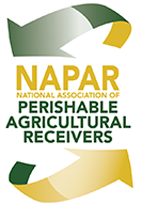Once considered sci-fi and futuristic, artificial intelligence, robotics and agriculture are now taking flight in specialty crop fields.
One player in this transformation is Hylio, a Texas-based drone company leveraging AI to help farmers cut costs, reduce chemical use and protect high-value specialty crops.
Hylio CEO, Arthur Erickson, speaks with The Packer about the intersection of robotics, AI and agriculture.
AI for Smarter Scouting
“The biggest tangible development of AI in specialty crop treatment is using machine learning algorithms to identify problems in crops,” Erickson says. “You might fly a camera drone that captures 500,000 images. AI stitches them together and, based on how you train the model, it can detect issues like volunteer cotton in a cornfield and target those areas specifically.”
Erickson notes this ability to distinguish between crops — even when both look nearly identical to the human eye — means farmers can spot-treat only what’s necessary, rather than spraying entire fields.
Drones: Small Machines, Big Impact
One misconception Erickson often hears is drones are too small to be productive compared to tractors or spray rigs.
“People see a 10- or 15-gallon drone and think it can’t cover much ground,” he says. “But actually, these drones can do hundreds of acres per day — rivaling self-propelled ground rigs.”
The secret lies in efficiency.
“With drones, you’re spraying a fine mist that’s absorbed much better by the plant,” Erickson says. “… for much less liquid or volume per acre, you’re still getting the same, if not better, results than traditional methods.”
While Hylio serves commodity farmers, specialty crops often reap the biggest rewards.
“Specialty crops require more frequent, precise and expensive applications,” Erickson says. “Our drones don’t trample vines or delicate plants like pumpkins or berries, and they let growers spray multiple times a week on demand. That’s a big ROI advantage.”
AI adds another layer of precision by targeting specific diseases or infestations.
“Instead of spraying all 10 acres of berries with an expensive chemical, you might only treat 10% or 20%,” he says. “That saves money and still protects the whole crop.”
Beyond technology, Erickson points to geopolitics as a growing factor. “Most drones farmers see online are foreign-made, usually from China,” he says. “Possible bans and tariffs are being discussed in Congress. Whether you agree or not, it’s happening.”
For U.S. growers, that could mean parts shortages or support issues.
“Hylio is designed, built and supported right here in Texas. We’re fully compliant and not subject to those restrictions,” Erickson says.
Why It Matters
For farmers, drones can mean lower input costs, timelier applications and healthier yields. For retailers, it ensures more reliable supply, consistent quality and sustainability stories to share with consumers. And for the U.S. produce industry, it underscores how homegrown technology is helping strengthen the supply chain from the ground up.
Your Next Read: Three’s A Crowd: Hylio Secures FAA Drone Swarm, Night Flight Exemptions











